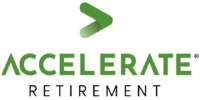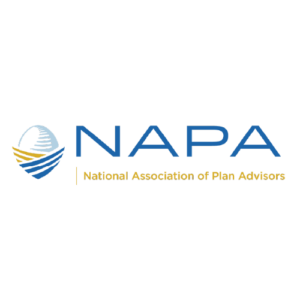
Congress releases SECURE 2.0 technical corrections discussion draft
On December 6, 2023, the committees of jurisdiction (the Committee on Health, Education, Labor and Pensions (HELP), the House Committee on Ways and Means, and the Education and the Workforce Committee) released a “discussion draft”1 of proposed technical corrections to the retirement plan-related portions of SECURE Act 2.0.
The issues discussed, some of which, were highlighted in a letter from Congressional leaders to the Department of the Treasury and IRS in May of 2023 are technical in nature and are not meant to change the substance of SECURE Act 2.0 as originally enacted.
The proposed technical corrections for retirement plans will clarify the following:
• When the age for required minimum distributions (RMDs) increases.
• There has been an increase in the limit on student loan repayments eligible for a matching contribution, where applicable, by the catch-up contribution limit.
• The contribution limit for starter 401(k) plans, which is currently $6,000 and adjusted for inflation starting in 2025, will be the same as the annual IRA limit (e.g., $7,000 in 2024).
• The initial cap on mandatory automatic contributions for new 401(k) plans is 10 percent until 2026, increasing to 15 percent after then.
• The standard limits on start-up credits don’t apply to the increased start-up credits for plans of a smaller size (less than 50 employees).
• The ability to make catch-up contributions remains valid for 2024 and beyond.
This document is just a discussion draft and will likely be introduced as a proposed legislation after the review of public comments.
Automatic IRA Act of 2024
Rep. Richard Neal, D-Mass., ranking member of the House Ways and Means Committee, has re-introduced the Automatic IRA Act of 20242. The bill would generally require employers with over 10 employees who don’t already offer a retirement plan to automatically enroll their employees in IRAs (automatic IRAs) or similar plans, like 401(k) plans. Smaller employers could be eligible for an existing startup tax credit if they adopt a retirement plan or a newly proposed $500 for three years tax credit available if they set up an automatic IRA (whether under state or federal law). Exemptions would apply for employers:
• With a current plan,
• With 10 or fewer employees,
• That has been in existence for less than two full years, or
• With governmental or church plans.
Note: This proposal is different from the Retirement Savings for Americans Act, which would establish a new savings program called the “The American Worker Retirement Plan.” This plan would give eligible workers access to federally sponsored, portable, tax-advantaged retirement savings accounts.
A summary of the Automatic IRA Act resides here3 and outlines other requirements such as:
• Levels of contributions
• Investments
• Lifetime income requirements
• Credits for small employers
The legislation would apply to plan years starting after 2026 if passed. The new credit for small employer automatic IRAs would apply to tax years beginning after 2024.
DOL’s automatic portability proposal
On January 29, 2024, the Department of Labor (DOL) released proposed regulations4 that, when finalized, will implement SECURE Act 2.0’s statutory prohibited transaction exemption (PTE) for “automatic portability transactions” through “automatic portability providers” that meet certain conditions. Comments on the proposal are due by March 29, 2024.
When employees leave their jobs with a retirement account balance between $1,000 and $7,000, retirement plans can cash out and automatically roll over these benefits to default IRAs, provided that the plan’s rules allow this and the employees don’t act within the required notice period. The follow-on automatic portability transactions are facilitated by automatic portability providers that roll over workers’ retirement savings from their IRAs to their new employers’ retirement plans.
An automatic portability provider must abide by the DOL’s recommended PTE in order to be compensated for automatic portability transactions. Additionally, the provider must:
1. Acknowledge fiduciary status
2. Satisfy the “reasonable compensation” standard of ERISA
3. Restrict its use of data
4. Offer open participation
5. Satisfy notice and disclosure requirements
6. Execute regular participant searches
7. Ensure active monitoring by a designated plan fiduciary
8. Limit discretion by adopting procedures that “… set specific standards and timeframes”
9. Undergo an independent audit annually
10. Maintain a website with information on fees, recordkeepers it deals with, and the number of plans and participants it covers
11. Forgo the use of exculpatory provisions in its contracts with plans
12. Retain records for at least six years.
Until it is finalized, the PTE is only a proposal and should not be depended upon.
IRS releases guidance on prohibited Pension-Linked Emergency Savings Account anti-abuse rules
On January 12, 2024, the IRS released Notice 2024-225, guiding anti-abuse provisions for Pension-Linked Emergency Savings Accounts (PLESAs).
Secure Act 2.0 allows plan sponsors to include “PLESA” accounts to their defined contribution (DC) plans. PLESAs are short-term savings accounts that are linked to a DC plan and are treated as a type of designated Roth account. Employees who are highly compensated cannot make PLESA contributions. Generally, PLESAs have a $2,500 balance cap, though the plan may set a lower cap.
If a plan provides matching contributions, PLESA contributions must be matched in the same way as regular contributions. However, the total annual matching contributions for PLESA accounts cannot exceed the $2,500 account limit, or if the employer elects, a lower amount.
Participants must be able to withdraw amounts from their PLESAs at least once a month. Concerning withdrawals, the statute provides that “for purposes of any applicable limitation on matching contributions, any matching contributions made under the plan are treated first as attributable to the elective deferrals of the participant other than contributions to a PLESA.”
The IRS believes that plan sponsors may be concerned about potential “abuse” in which participants contribute to a PLESA in a way that can maximize matching contributions but maintains little to no contributions in the PLESA. For instance, a participant might manage to “buy” $2,500 in matching contributions using only PLESA contributions, then withdraw all those PLESA contributions during the year while keeping the related matching contributions, thus effectively getting a $2,500 match with no long-term saving.
The statute provides that a plan “may employ reasonable procedures to limit the frequency or amount of matching contributions with respect to contributions to [a PLESA], solely to the extent necessary to prevent manipulation of the rules of the plan to cause matching contributions to exceed the intended amounts or frequency.”
Notice 2024-22 states that the following would not be permitted, concerning possible plan anti-abuse measures. A plan may not:
• Forfeit matching contributions already made on account of participant contributions to a PLESA because of a participant’s withdrawal from a PLESA;
• Suspend a participant’s ability to contribute to a PLESA on account of a withdrawal from the PLESA; and
• Suspend matching contributions made on account of participant elective deferrals to the underlying DC plan.
Consequently, under Notice 2024-22, rules limiting the ability of participants to “game the PLESA system” will generally have to focus on restricting the frequency and amount of PLESA contributions, not on penalizing abuse. The IRS and DOL are anticipated to release further details about the use of PLESAs.
IRS Notice 2024-02 Delivers Start of SECURE Act 2.0 Guidance
On December 20, 2023, IRS released Notice 2024-026 containing a slew of guidance on 12 provisions of SECURE Act 2.0, including:
1. Expanding automatic enrollment in retirement plans
2. Modifications to plan start-up credits for small employer plans
3. Military spouse retirement plan eligibility credit for small employers
4. Small immediate financial incentives for contributing to a plan
5. Contribution limits for SIMPLE plans
6. Exception to the early distribution penalty tax for terminal illness withdrawals
7. Replacing SIMPLE retirement accounts with safe harbor 401(k) plans during a year
8. Market rate cash balance plans
9. A safe harbor for correction of employee elective deferral failures
10. Provisions relating to plan amendments
11. SIMPLE and SEP Roth IRAs
12. Optional treatment of employer matching or nonelective contributions as Roth contributions
A summary of selected segments of Notice 2024-02 follows.
Optional treatment of employer matching or nonelective contributions as Roth contributions
SECURE 2.0 allows 401(k), 403(b), and governmental 457(b) plan sponsors to provide participants the option to receive matching or nonelective employer contributions as designated Roth contributions, effective as of December 29, 2022. The following guidance applies to this new provision:
• Plan sponsors can decide whether or not to allow any kind of Roth contributions within their plans, whether it’s employee elective, employer matching, or employer nonelective.
• If offered, and elected, employees must designate employer contributions as a Roth contribution no later than when they are added to their account. This designation is final, but the participant must be able to make or change the designation going forward at least once a year.
• Roth employer contributions are subject to taxation and separate accounting rules. They include the participant’s income in the year they are added to the account, even if the contribution is “deemed to have been made” for the previous year.
• Only employer contributions that are fully vested may be designated as Roth.
• Roth employer contributions are not subject to federal income tax withholding and are not wages for purposes of FICA or FUTA withholding.
• Roth employer contributions must be reported using Form 1099-R for the year in which they are credited to the employee’s account. The total amount of designated Roth matching and Roth nonelective contributions that are allocated in that year are reported in boxes 1 and 2a of Form 1099-R, with code ‘G’ in box 7.
• Roth employer contributions are not included in the IRC Sec. 415 safe harbor definition of compensation.
Market Rate Cash Balance Plans
To put it simply, Notice 2024-02 allows cash balance plans that previously avoided using market rate interest credits (e.g., returns on an S&P 500 Index fund) for funding because of IRS anti-backloading rules, to convert to a market rate prospectively without special grandfather rules.
SECURE Act 2.0 stated that cash balance plans using a variable interest crediting rate could use a reasonable assumption as to the rate of return (e.g., on a designated S&P 500 Index fund or the yield on designated fixed income securities) not to exceed 6%.
A key question that came up when implementing this provision was whether a plan that hadn’t been using a market rate could, under the new SECURE Act 2.0 rules, switch to a market rate for future benefits, or whether it would be required, under
anti-cutback rules, to preserve the old fixed (or variable + a minimum) rate for prior accruals.
According to Notice 2024-02, plans that either
1. Currently provide increasing pay credits
2. Are being changed to provide for increasing pay credits may do so prospectively
As long as they don’t reduce a participant’s “accumulated benefit” (the balance in the participant’s cash balance account).
These regulations are quite complex, and this is only a summary. They offer plan sponsors considerable flexibility in switching to market-based interest credits for plans with increasing pay credits. If you’re interested in implementing this change, then sponsors should consult with their legal and actuarial advisors as to how best to go about doing so.
Expanding automatic enrollment in retirement plans
SECURE Act 2.0 provides that, effective for plan years beginning after 2024, 401(k) and 403(b) plans established after the law’s enactment date of December 29, 2022, must default participants into the plan at a contribution rate of at least 3% of pay, escalating each year by 1% up to at least 10%. The new rule does not apply to plans adopted before the date of enactment, for the first 3 years of a new employer’s existence, or to employers with 10 or fewer employees.
Notice 2024-02 provides that:
When it comes to the exemption for plans established before the date of enactment, a plan is considered established on the day when the terms allowing salary deferral elections are first adopted. Regardless of whether the plan terms are effective after the adoption date.
• If two plans, both of which qualify for the pre-enactment exception, merge into one, the merged plan also qualifies for the exception. Similarly, if a plan is split from a pre-enactment plan, the exception would still apply. However, if a pre-enactment plan merges with a plan that doesn’t qualify for the exception, the exemption is typically lost. It may be possible, however, concerning certain mergers, under certain circumstances, to preserve the exception where the merged plan with the exception is designated as the ongoing plan.
• The rules for automatic enrollment would apply to starter 401(k) plans.
Tax credit for small plan coverage of military spouses
SECURE Act 2.0 introduces a new tax credit for small employers (i.e., < 100 employees) for DC plans providing that military spouses are, within two months of hire, immediately eligible for and fully vested in employer nonelective and matching contributions. The tax credit is the sum of $200 per military spouse, plus up to $300 based on employer contributions, per year for three years.
• The requirement of having less than 100 employees must be met for each year that the tax credit is claimed.
• If an employer provides benefits that don’t qualify for the military spouse credit but later amends or adopts a plan that does qualify, the three-year credit period begins when a military spouse begins participation in that plan (or in the case of an amendment when the amendment takes effect).
• While the credit is only effective for taxable years of the employer beginning after December 29, 2022, where the three-year credit period begins before 2023 (e.g., qualifying benefits are provided beginning with the 2022 year), the credit may be claimed for the portion of the three years that remains after 2022.
Small immediate financial incentives for contributing to a 401(k) or 403(b) plan
SECURE 2.0 allows employers to offer small or de minimis financial incentives, such as inexpensive gift cards, to encourage employee participation within workplace retirement plans. These incentives, however, must not be paid from the retirement plan’s funds.
Notice 2024-02 provides:
• A financial incentive is considered de minimis “only if it does not exceed $250 in value.”
• This special treatment is only available for employees who have no 401(k) or 403(b) salary deferral election in effect.
• The incentive may be given in installments.
• Matching contributions do not qualify as de minimis incentives.
• De minimis incentives are not subject to plan contribution rules. Thus, plan qualification and deductibility timing rules do not apply to them.
• De minimis incentives are remuneration, includible in gross income and wages and subject to employment tax withholding and reporting.
For more information, visit accelerateretirement.com or call (888) 439-7071.
Links:
1. https://edworkforce.house.gov/uploadedfiles/secure_2.0_act_technical_corrections_discussion_draft.pdf
2. https://democrats-waysandmeans.house.gov/media-center/press-releases/neal-introduces-automatic-ira-bill
3. https://www.napa-net.org/sites/napa-net.org/files/Final_Auto IRA_Summary_020224.pdf
4. https://www.govinfo.gov/content/pkg/FR-2024-01-29/pdf/2024-01208.pdf
5. https://www.irs.gov/pub/irs-drop/n-24-22.pdf
6. https://www.irs.gov/pub/irs-drop/n-24-02.pdf
This material was created to provide accurate and reliable information on the subjects covered but should not be regarded as a complete analysis of these subjects. It is not intended to provide specific legal, tax or other professional advice. The services of an appropriate professional should be sought regarding your individual situation.
Investment advisory services offered through Accelerate Investment Advisors LLC (“Accelerate”) DBA Accelerate Retirement, a federally registered investment adviser. Advisory services are only offered to clients or prospective clients where Accelerate and its representatives are properly licensed or exempt from licensure. ACR# 6581947 04/24








